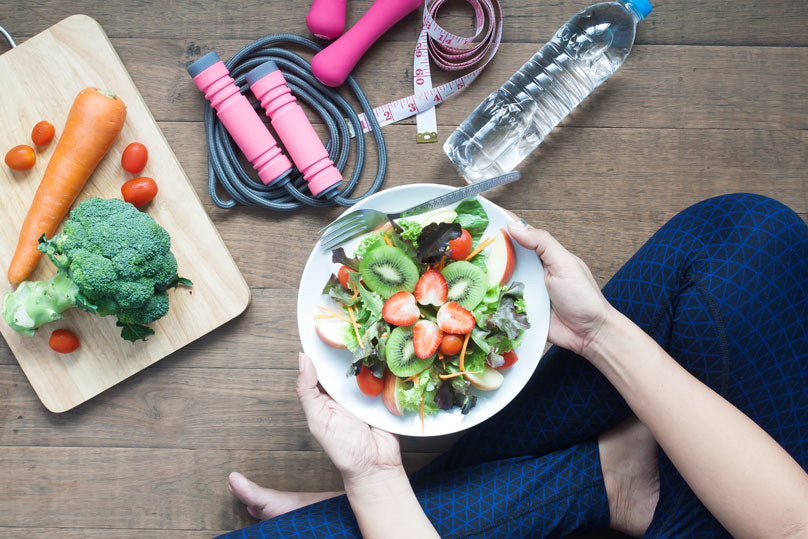3 Important Lifestyle Changes for a Healthy Heart
Published July 21, 2022

You’ve heard it before—cardiovascular disease (CVD) is the number one killer of men and women. The most recent data from the Centers for Disease Control and Prevention shows about 610,000 Americans die from CVD each year, which means it accounts for one in every four deaths in the United States; however, these rates vary among race, ethnicity, and sex. The CDC reports CVD is the leading cause of death among most minority groups, and according to the American Heart Association (AHA), one in three deaths among women each year are due to heart attack or stroke.  And yet, every single person has the ability to reduce risk factors and outcomes. The AHA finds 80 percent of heart disease and stroke cases can be prevented by following a heart-healthy lifestyle. The good news is this lifestyle doesn’t differ much from your typical means of being healthy; it requires eating well, regular exercise, and no smoking. But then, just like your standard commitment to being healthy, this can be easier said than done. OK, fine, it can be downright difficult. The trick is to start small. Focus on making one lifestyle change at a time, and once you’ve got the hang of it, focus on tackling another. And then another, and another, and...you get the idea. Below are three general places you can start to improve upon today.
And yet, every single person has the ability to reduce risk factors and outcomes. The AHA finds 80 percent of heart disease and stroke cases can be prevented by following a heart-healthy lifestyle. The good news is this lifestyle doesn’t differ much from your typical means of being healthy; it requires eating well, regular exercise, and no smoking. But then, just like your standard commitment to being healthy, this can be easier said than done. OK, fine, it can be downright difficult. The trick is to start small. Focus on making one lifestyle change at a time, and once you’ve got the hang of it, focus on tackling another. And then another, and another, and...you get the idea. Below are three general places you can start to improve upon today.

Your plate
Eating the right foods can help you control your weight, blood pressure, blood sugar and cholesterol, the AHA reported. Foods high in saturated fat threaten cholesterol levels, while foods high in carbohydrates threaten blood sugar levels. If you’re blood sugar is abnormal, you risk diabetes, which on its own increases CVD risk four-fold. Instead of red meat, rice, noodles, and added sugar, consider salmon, brown rice, and fruit, especially blueberries and citrus fruits, respectively. Swap one heart-healthy food in a meal you already love so you get its benefits without feeling deprived. Salmon and other fatty fish are rich in omega-3 fatty acids, which studies have shown lower the risk of plaque build-up in the arteries. And a component layer of tissue surrounding grains of brown rice may work against angiotensin II—a known culprit in the development of high blood pressure and atherosclerosis, according to a 2010 study. Oh, and since we’re not total buzzkills, studies have shown red wine and dark chocolate can be part of a heart-healthy lifestyle. Just remember everything in moderation.

Your workout
The AHA finds over 50 percent of American adults aged 18 and older do not log the recommended 150 minutes of moderate to vigorous exercise each week. But again, you don’t have to go out and sign up for a marathon (not if you don’t want to). For one, fitting exercise in for 10 minutes, 3 times a day does wonders for your heart—log the time by taking the stairs instead of the elevator; getting off a stop early on your subway ride to walk to the office; and parking at the farthest end of the lot. Then, when you’re ready, aim for at least two and a half hours of moderate physical activity each week. That could be something as simple as taking a 20-minute walk every night after dinner. Not only will you build strength and endurance over time, but a regular exercise routine will help to lower blood pressure, maintain body weight, and increase your “good” HDL cholesterol. Win-win.

Your phone
There are plenty of apps out there that make it easier to monitor heart-healthy habits, from activity trackers to blood pressure monitors. But when we say phone, we’re talking about the amount of time you spend on it before bed. Research shows the blue light emitted from your smartphone disrupts the production of melatonin, otherwise known as the sleep hormone. This can trick your body into thinking you still need to be awake and rob you of a good night’s sleep. It doesn’t just affect you that night, but it affects your productivity the next day. And, you guessed it, it increases your risk for chronic disease, like CVD. The National Sleep Foundation reports “people who don't sleep enough are at higher risk for cardiovascular disease—regardless of age, weight, smoking and exercise habits.” One study found those who slept fewer than six hours per night were about twice as likely to have a stroke or heart attack compared to people who slept six to eight hours per night. Turning your phone screen side down around 9 PM at night is a great way to ensure you get quality shut-eye, and optimal health.



